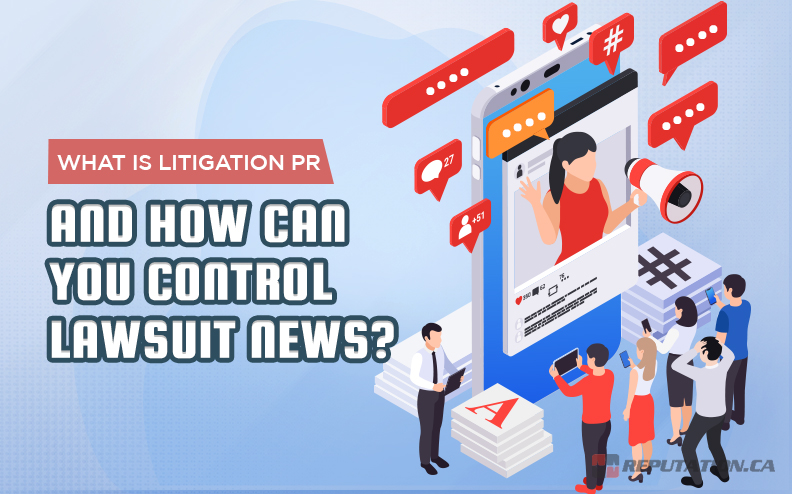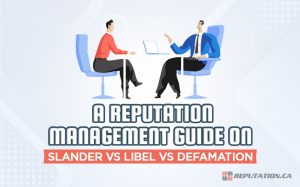We generally work hard to keep our heads down and avoid finding trouble in the eyes of our country’s legal system. Law-abiding citizens can usually go their whole lives without running afoul of the law, but sometimes we find ourselves in unpleasant circumstances. That said, the legal system primarily impacts the businesses that operate in the country. Many companies flirt with legally ambiguous practices to maximize their profit margins.
Sometimes, the offenses are minor and do not significantly impact the customers or clients who use those businesses. Other times, the offense ripples out and damages the financial security of consumers and jeopardizes their livelihoods. Usually, the events that place a company in legal trouble are the sort that could have been avoided. As a result, the legal issues the business experiences can impact the public perception of them.
Managing your reputation in the face of legal trouble is one of the most complicated things a business can attempt. Generally, hearing that a company has been involved in legal proceedings in which it is the defendant can deter customers from employing their services. A history of legal trouble makes a person or organization seem unreliable and untrustworthy, which is why ex-convicts have trouble finding employment upon release.
As a result, companies have been forced to adopt extreme measures to protect their reputations in the face of legal trouble. Litigation PR is a complicated concept that not everyone understands, but knowing what it is and how to implement it could be essential to your company’s survival.
What is Litigation PR?
Public relations, abbreviated as “PR,” is a common practice used by individuals, organizations, and bodies of government to handle public outcry. It is clearer than ever that we can never make everyone happy, and there will always be a demographic that takes exception to what we say or do. You cannot please everyone, and some displeased people will be very vocal about their disdain.
Sometimes, the outcry against a business or individual is baseless and can be resolved easily with a simple statement. When the victim of the outcry is dealing with a tarnished reputation because of previous or ongoing litigation, resolving the issue is much harder. Lawsuits are serious events that can question your statements’ validity since many have adopted a “guilty until proven innocent” mentality.
As a result of the strain caused by litigation, a special type of public relations tactic was developed specifically for legal trouble. Litigation PR is a little complicated since it is designed to help turn the tide of ongoing litigation in the defendant’s favor. Specifically, it focuses on circulating the defendant’s side of the story to try and garner public support so the lawsuit has less of an impact on their reputation.

Litigation PR first emerged in the 1980s in America due to a man named Alan Hilburg. Hilburg was a branding consultant faced with the challenge of preserving the reputation of U.S. Tobacco during the infamous Marsee v. United States Tobacco Co. Considering this case is over 30 years old, you might not have heard of it, but it was a case that was designed to hold the American tobacco industry accountable for tobacco’s connection to oral cancer. Specifically, the product was a smokeless tobacco called “snuff” that allegedly killed Sean Marsee, who contracted oral cancer. Marsee’s mother attempted to sue U.S. Tobacco to alter the country’s stance on tobacco.
With Hilburg’s help, U.S. Tobacco was able to end the case in their favor, and Marsee’s litigation failed to effect change. Hilburg went on to fame, and the demand for litigation PR skyrocketed since his efforts helped protect U.S. Tobacco despite contemporary knowledge that tobacco does cause cancer. Hilburg took to the media to reinforce his client’s reputation in the face of Marsee’s allegations, which was able to sway public opinion. This was especially easy since, in the ’80s, most people still regularly used tobacco.
In some cases, litigation PR can impact the litigation’s outcome, but most courts prevent juries from accessing media to avoid having their opinions tainted. However, the main goal of litigation PR is to turn public opinion in the defendant’s favor rather than taint the legal system. The problem is that litigation PR is a very sensitive technique that must not infringe on the sanctity of the country’s legal system. Countries like Canada and America allow free speech, but that same freedom must not inhibit the other aspects of their constitutions. As a result, implementing litigation PR must be done carefully to avoid getting into more trouble than you already are.
How to Execute Litigation PR
Litigation PR is a pressure game, especially since most companies face trials without a jury because the issue is civil rather than criminal. Litigation PR brings about debate designed to encourage early settlement rather than a lengthy court proceeding. The ideal solution is to have the charges lowered or dropped entirely, though the latter is significantly more difficult.
While influencing the outcome of the litigation is a primary concern, the main use of litigation PR is to preemptively protect the defendant’s reputation to either soften the blow or eliminate the damage. Once again, the latter is more difficult but possible if the correct measures are used. As a result, most litigation PR is oriented toward the consumers outside the courthouse who might rally to the company’s defense despite the legal controversy.

Executing litigation PR might seem complicated, but author Kathy Fitzpatrick distills the concept into 6 major goals. The main objectives of litigation PR, according to Fitzpatrick, are:
- Counteracting negative publicity.
- Make the customers’ viewpoint known.
- Balance media coverage with your side.
- Help the public and media understand complex legal issues.
- Defuse hostility.
- Help resolve the conflict.
Litigation PR should always be oriented towards these 6 goals to ensure the best possible results. It is extremely easy to let your PR efforts focus on trying to clear yourself of accountability through any means necessary. This occasionally leads to strategies that ignore the potential harm you caused to avoid punishment.
Litigation PR is about making the public’s concerns heard while explaining why the blame is not entirely on your shoulders. Therefore, any attempts to implement litigation PR practices should be oriented toward reminding the public of the good your company has done without trying to shift responsibility for obvious mistakes.
Litigation PR is often abused to redirect frustration and displeasure, even when your culpability is undeniable. Sometimes, this stance is somewhat understandable since it is possible that you are being saddled with more blame than you deserve. That is why balance is important to litigation PR because it helps show both sides of the argument without shifting blame.
How to Protect Against Legal Reputational Damage
Reputational damage is extremely difficult to protect against, especially since reputations are much easier to harm than create. Litigation PR is designed to help sway public opinion, but knowing how to protect yourself from legal ramifications is half the battle. Statements addressing the legal controversy you find yourself in will only take you so far, so you must take steps to protect yourself from the rest of the coverage.
The problem with litigation is that when you are involved in legal proceedings, all your critics will take to the internet. From there, any issues, grievances, or accusations they have can circulate worldwide within hours. This can quickly bury you in bad publicity as more accusations come out of the woodwork and are tied to your name. This can lead to an unfortunate trend since search engine algorithms attach the most recent news about a subject to the results list.
This means the news about the litigation and its discussions will be closer to the top of the results page than most information about your business. This might make recovering from the reputational strain of litigation seem impossible, but it is within your ability. Several techniques you can employ alongside litigation PR will help you outrank the news surrounding your business. The most common technique is actively managing your company’s social media presence to promote your side of the story. Legal concerns are not always as clear-cut as the general public wants to believe, and you might have been falsely accused, or the plaintiff might have exaggerated the circumstances.
This exaggeration is especially prevalent in cases where the litigation results from a customer accusing a business of negligence. Sometimes, the product offered by a company has a defect that makes it malfunction or fail to function. In other cases, the product harms the customer because the defect presents a health hazard. This usually means the subsequent litigation is motivated by their desire to recover financially from the damages.

Unfortunately, some view the process as a way to earn a small fortune at the defendant’s expense. As a result, a small portion of the population will attempt to exaggerate the severity of their experience to maximize their payday. While this is illegal, most cases like this tend to favor the plaintiff over the defendant.
Furthermore, seeing one person file a lawsuit like this could spark like-minded customers to follow suit even if they were unaffected. They will also flock to social media to make claims against you, which is where social media management comes into effect. The complaints will likely tag your company’s social media profiles (Twitter, Facebook, Instagram, etc.) to draw you into the discourse. Ensuring your accounts are free of legally dubious posts or comments that might be considered off-color to an outsider looking in is essential.
Additionally, your social media profile serves as the initial platform from which you can reply to the accusations. Your responses can help overcome the one-sided content circulating about the situation, but you will also need to put more emphasis on the content hosted on your company website.
How to Implement Litigation PR to Your Responses
As mentioned, litigation PR involves connecting with the situation’s main media sources. There will be articles and interviews to get your opposition’s opinions and input. Additionally, the comments made by uninvolved parties will be factored into the media coverage. Implementing litigation PR to your defense will involve contacting media outlets and allowing them to interview you for content. Doing this will allow you to get your side of the story to the public on an impartial platform rather than hosting content on a platform you control. Depending on your business’s field, you might have been invited to speak on someone else’s platform in the past.

Overcoming the stigma of litigation will likely require you to accept these invitations, even if it comes from an organization focusing on news coverage rather than your industry. Coming forward and telling your side of the story is more reassuring to the public than you realize. That said, honesty is the best policy since lying to your customers only for the truth to come out later could make things worse. Ultimately, you need to take advantage of other media outlets to help spread your side of the situation since people are less likely to trust comments and statements on a platform you control.
Take Your Reputation Back!
Facing a lawsuit can be terrifying regardless of its effect on your business, but knowing your livelihood can be impacted can be worse. Getting ahead of the bad press generated by litigation is paramount to surviving the inevitable reputational damage. However, you must account for all the potential threats to your reputation regardless of any upcoming or ongoing litigation. Managing a corporate reputation in modern society can be challenging because of how quickly information travels through the internet. As a result, it has become a full-time job that requires constant oversight to ensure the best reputation possible.

We at Reputation are dedicated to preserving our clients’ public image and will employ every method available to keep your company name unsullied. We manage everything from social media, public relations, libel, and Wikipedia articles on our clients’ behalf. While we cannot offer legal advice, we can ensure the public perception of your brand name is as positive as possible. We urge you to visit our website and take your reputation back!












